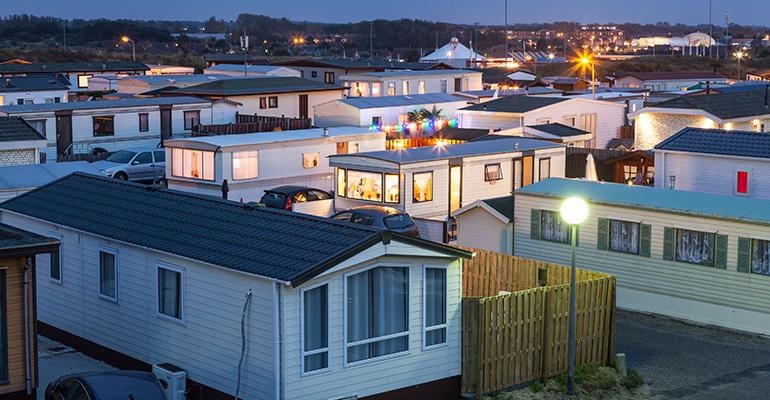Today’s research post comes to us from Serafima Healy, one of ZeNETH’s newest researchers. Our team is exploring the realities of mobile home living, and how that model can be evolved as a housing solution in the 21st century.
Read on!

In America, trailer parks make up 6 percent of the overall housing market. Most trailer parks are a form of non-subsidized affordable housing which provide housing for about 20 million Americans. While there are some who are satisfied with trailer park living, since the 1990’s the trailer park model has become increasingly flawed. Many trailer parks are neither economically sustainable or equitable. Examining the problems with current trailer park models will help Project ZeNETH understand how to fill the current market gaps with it’s own, hypothetical business model.
 Problem #1: Living Conditions Aren’t Always Livable & Policy Isn’t Helping
Problem #1: Living Conditions Aren’t Always Livable & Policy Isn’t Helping
First and foremost, many trailer park living conditions are inadequate. For example, in Ventura county, California, there are 5,567 trailer parks, a third of which have living conditions that have been compared to third world countries. Many state policies restrict the quality of life in trailer parks. The department in Ventura county tasked with ensuring these communities reach safety standards have only 25 people to manage all 5,567 parks. An article from the LA Times titled Problems Fester at Some Trailer Parks states that California policy says only 40 percent of parks are inspected every seven years. This means that someone could be living with a ruptured septic tank for months before it even hits state radar. The lack of support from state policy means many trailer park owners must take responsibility into their own hands. This is costly to park owners and many do not have the funds to make necessary repairs. This type of relationship with the state could be disheartening and could give some trailer park residents the sense that they are second class citizens.

Problem #2: Park Owner & Tenant Relationships
Historically, trailer parks have been sources of community. In the 1950’s they were run as mom and pop businesses, where park owners often lived on the same land as tenants and generational families and communities were tightly knit. However, a shift in the 1990’s occurred: corporations began buying trailer lots and raising rents. The sense of family and community once found in trailer parks disappeared as those who could not afford the rising rents were displaced. Tenants became seen as sources of income rather than neighbors. A sense of distrust arose between corporate landowners and tenants as corporations began selling their trailer lots to developers and more tenants were displaced. Again, this relationship could be hurtful to some living trailer park communities and again enforces the stigma that there are people who see those living in mobile communities as second class humans.

Problem #3: You Own the House but Not The Land
One of the many issues mobile home communities face is that tenants may own their mobile home but not the land they live on. This means if their park owner decides to sell the land, the tenant has to pack up their house and move it to another lot. Not only is this displacement, but there are currently many policies that prohibit older mobile homes from being taken on highways. This leaves the tenant stranded with a mobile but no where to put it and no way to take it anywhere. The concept that people pay rent for the land, not the home is only sucking more money out of the tenant. As a result, people living under this business model have very little security. The organization ROC USA is currently working to help trailer park tenants purchase the land under their homes and function as a co-operative. This NPR article discusses the overwhelming success of ROC USA and its impact on American trailer parks.
Many people are beginning to understand the complex issues with modern trailer park models. Organizations are working to assist with basic necessities, change policy, and provide alternatives. Project ZeNETH is working to develop a business model that will address some of the problems affordable housing communities are facing. By examining the example of trailer parks, we are able to identify important problems and develop solutions.
Additional Media
Photo Album: Life Inside A Trailer Park by David Waldorf http://davidwaldorf.com/2015/12/01/lfe-inside-a-trailer-park/
Tucson: Trailer park living for America’s poor: https://www.youtube.com/watch?v=5jeMp0uF1kA
Continued Reading
How Mobile Homes Hinder The American Dream
Home Sweet Mobile Home: Co-Ops Deliver Ownership
I’m homeless and I would love a double wide I would have no problem living in a trailer park but I need help to get started from a housing program